While the thought of Sicily may conjure images of godfathers and gangster molls, there’s much more to this geographically stunning island than old mafia ties. Palermo, the Sicilian capital situated in the northwest, is well worth a visit, but the European jet set tends to flock to Taormina in the northeast. Serving as a glamorous resort town since the 19th century, Taormina offers breathtaking views at every turn from its perch atop a cliff plummeting straight into the Ionian Sea. The settlement is divided into two sections: Taormina town (where most of the shops and hotels are) and Taormina mare (set by the beach and accessible by a short funivia, or cable car ride). So here is an insider’s guide to Taormina, Sicily, with our favorite tips on what to do, where to stay, and more.
What to Do
Teatro Antico
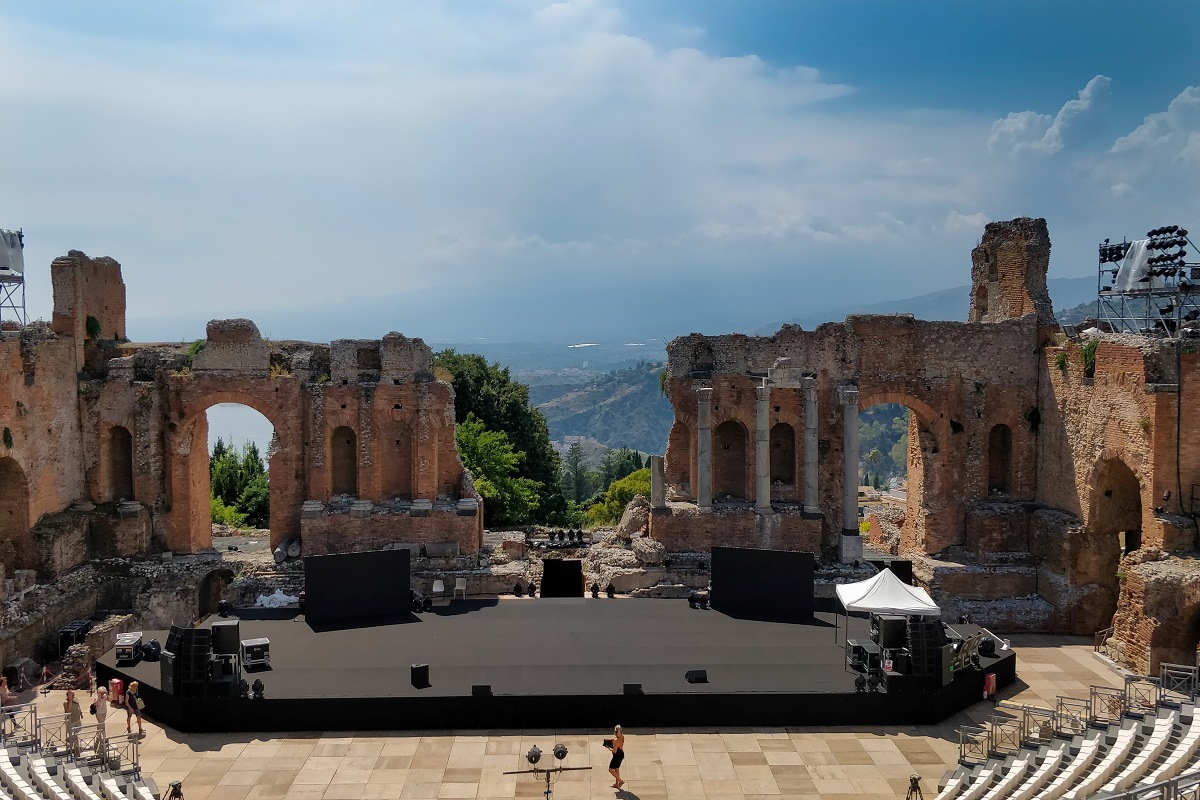
Taormina’s most famous landmark is the Greek Theater, originally built in the third century BC under Hiero II of Syracuse. But under Roman rule in the second century BC, it was completely rebuilt with all the characteristics of a Roman theater. The perfectly semicircular cavea rises in stepped seating to an upper diameter of 109 meters, the stage stands above the level of the orchestra, and the finely decorated stage loft is so high that its sides adjoin the top rows of seats to create an enclosed space. A fortuitous gap in the wall of the loft frames Taormina’s most celebrated view of the surrounding countryside as far as Mount Etna, one that has been immortalized in paintings and photographs as one of Italy’s most iconic.
Cattedrale di San Nicola
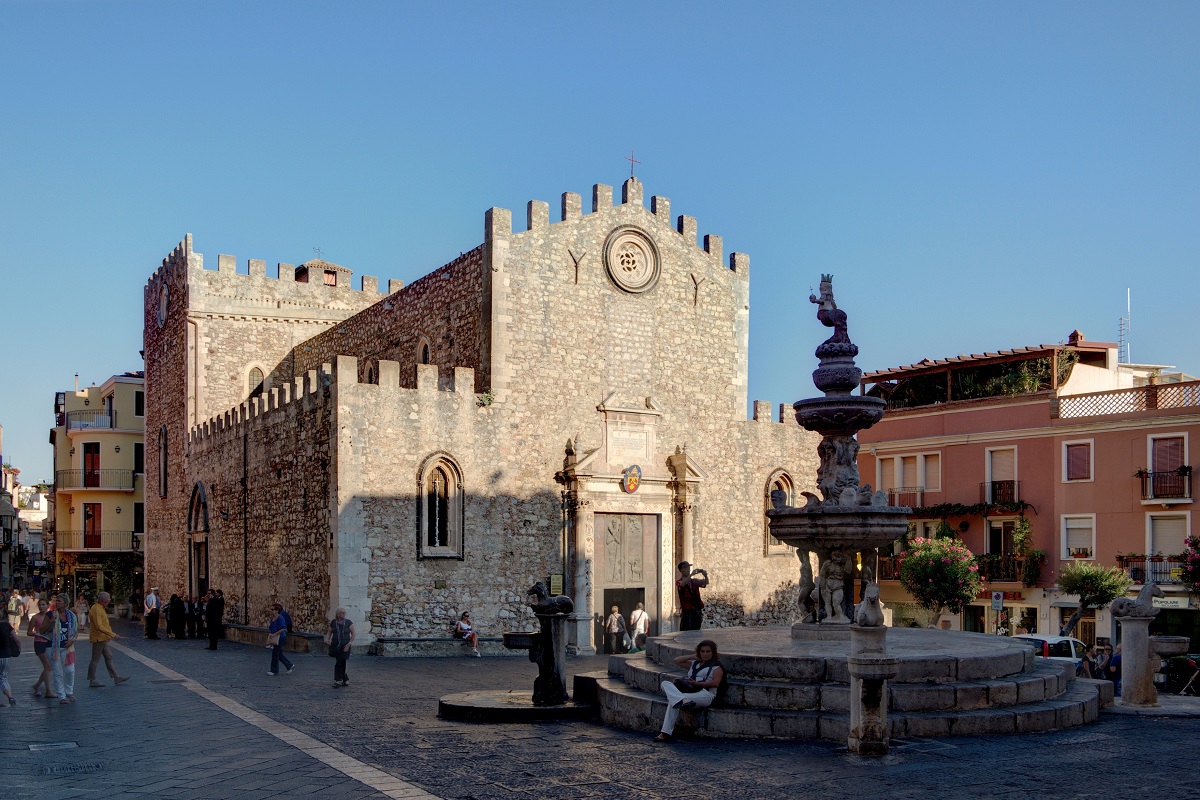
Opposite the Town Hall, the street widens out into Piazza del Duomo, with the Cathedral of San Nicola. Founded by the Hohenstaufens in the 13th century and altered several times in the 15th-17th centuries, it combines medieval and more recent features. The unplastered exterior with its crenellations is original, whereas the Baroque main door was added in 1636 and matches the 1635 Baroque fountain in the middle of the square. The three aisles of the basilica are separated by large pillars supporting pointed arches. The interior is decorated with a number of works dating from the 15th and 16th centuries, including the 15th-century Visitation of the Virgin Mary by Antonio Giuffrè and Madonna and Child with Saints by Antonello da Saliba, painted in 1504.
Corso Umberto
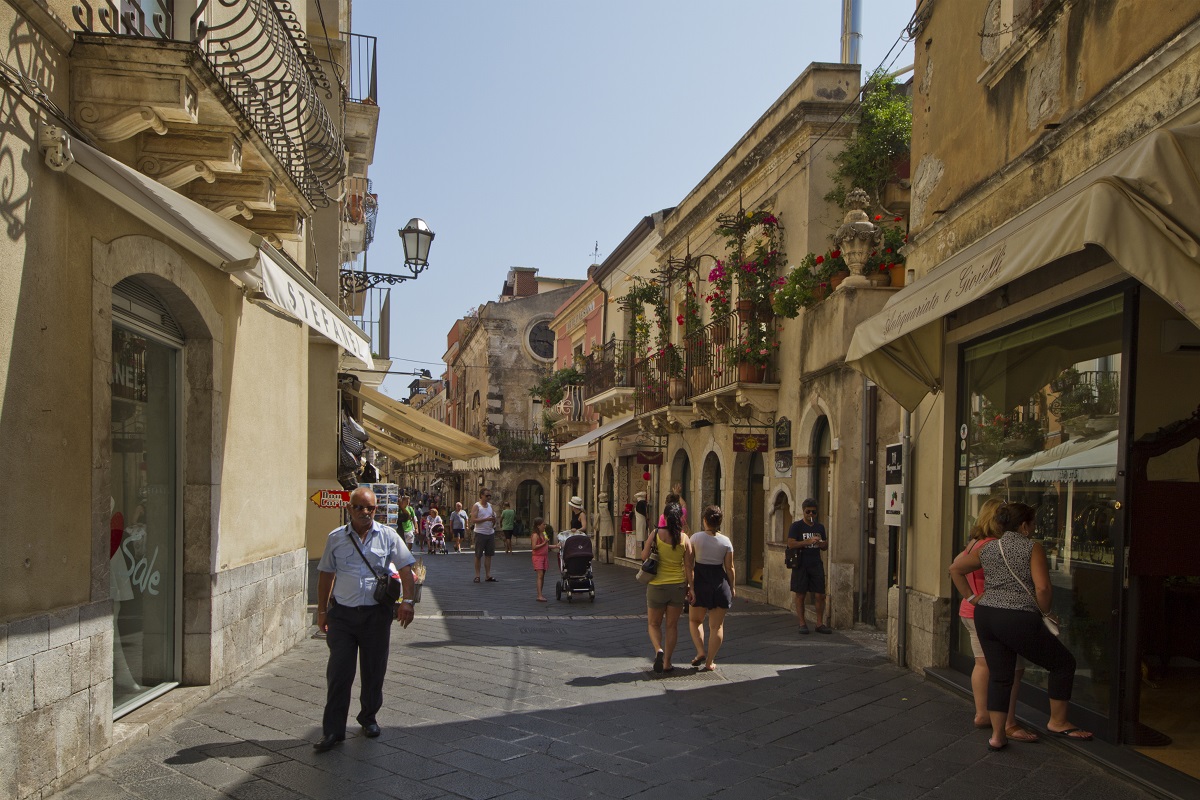
For most tourists, the greatest appeal of Taormina is the town itself. Its streets are a pleasure to stroll, lined with romantic buildings and opening onto terraces with stunning views. The approach is equally compelling: from the coast road at Cape Taormina, Via Pirandello snakes its way up the mountain, passing Byzantine rock-graves on the left, the belvedere on the right, and the funicular to Mazzarò. It brings you to Porta Messina which, together with the adjoining Piazza Vittorio Emanuele, forms the grand entrance to the town. This is the start of the main street, Corso Umberto, which then crosses the town before ending at Porta Catania. The entire street with its squares and terraces, shops, open-air cafés, and lanes leading from it, seems made just for sauntering and stopping to savor the views of Mt. Etna and the sea.
Piazza IX Aprile
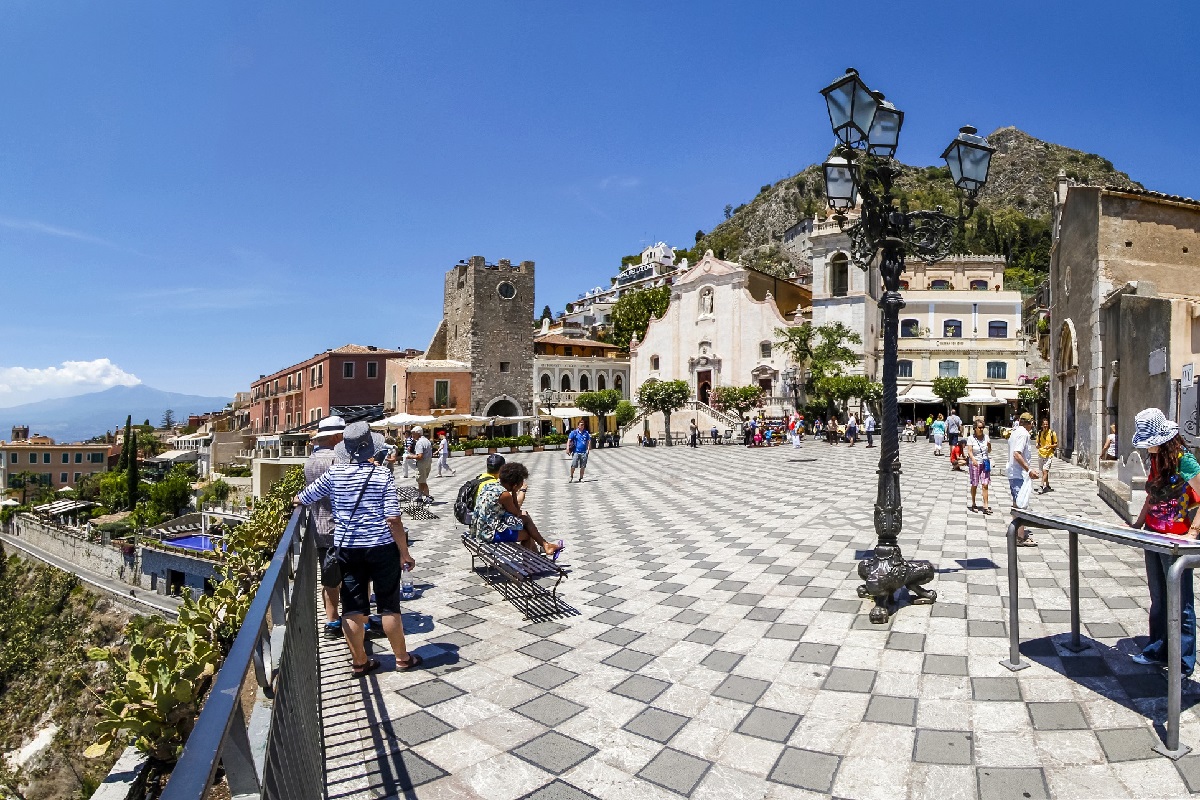
Piazza IX Aprile, which lies along Corso Umberto, opens onto a terrace with a beautiful view of Mt. Etna and the bay. This piazza is where the older part of the town begins, marked by a square stone clock tower. Decorating the piazza is the double stairway and Baroque façade of San Giuseppe, a pink confection of an exterior. The bright interior of Rococo stucco work is so ornate and white that it looks like cake frosting.
Villa Comunale
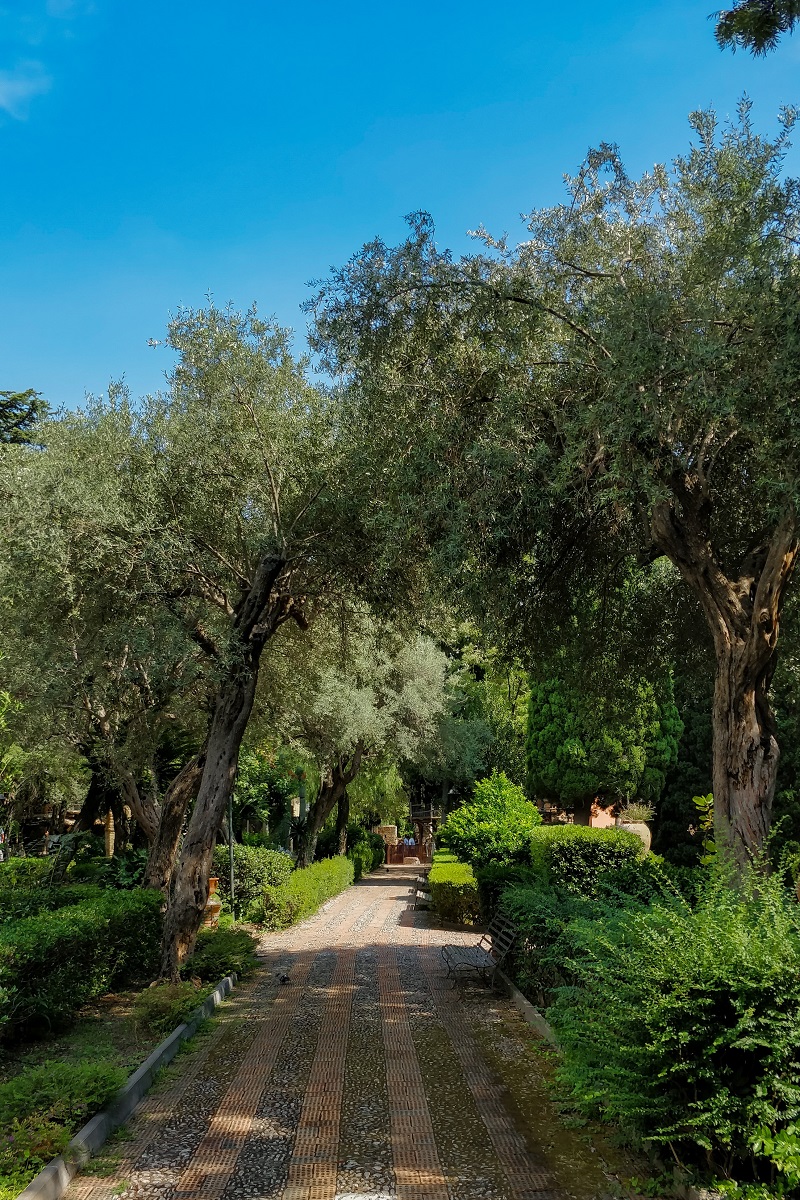
Below the former Dominican monastery, Via Roma runs east to the municipal gardens of Villa Comunale. The gardens were created by Florence Trevelyan, an Englishwoman who planted rare species here and built the fanciful and imaginative Victorian stone follies that survive today. Its commanding position offers some excellent viewpoints, and you’ll find more if you follow Via Bagnoli Croce on to the Belvedere. From here, you can return on Via Luigi Pirandello, passing below the Greek Theater, to the Porta Messina.
Seaside
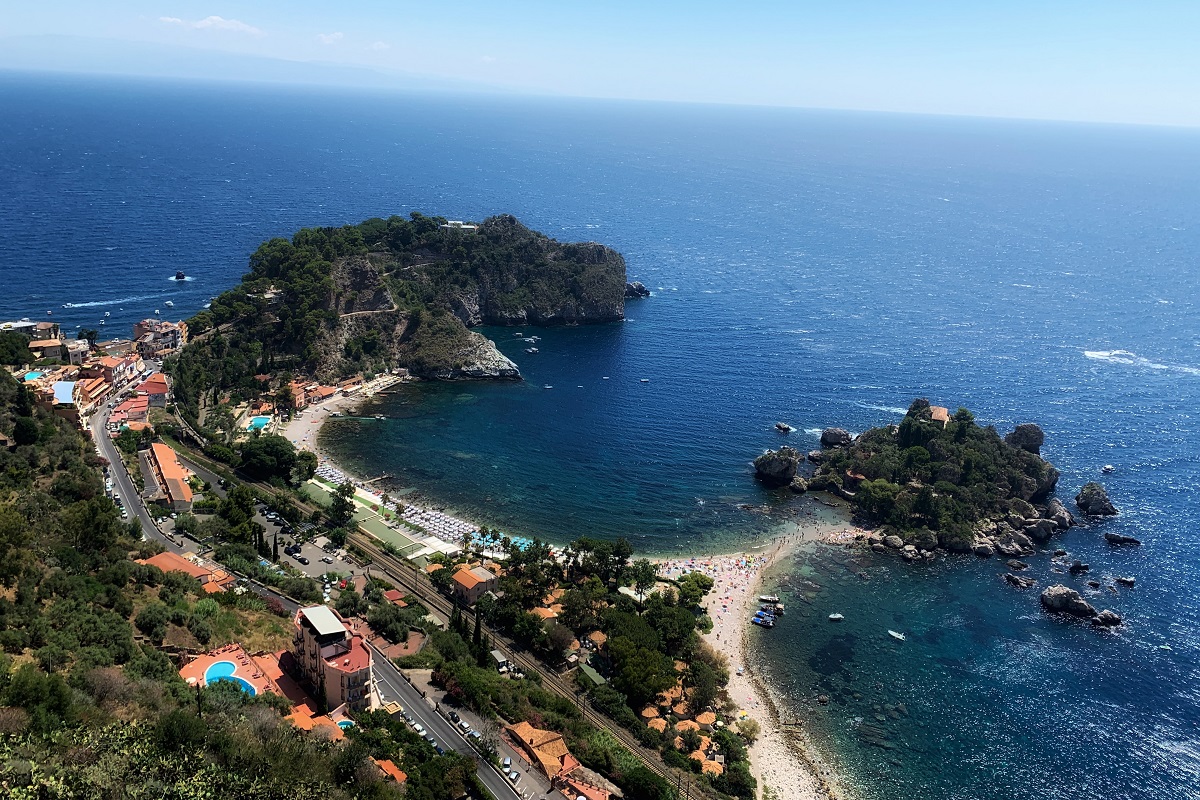
For beachgoers, try Mazzaro Beach or Isola Bella. These narrow stretches of sand might not look like much compared to larger continental swaths, but they are a fun trip to get here involving a ride down in the town’s cable car (on Via Luigi Pirandello). The Isola Bella is a small rock-bound island with a nature preserve, almost connected to the mainland by a sandy beach. You can cross to walk the paths around its perimeter and enjoy the views from its terraces. All along the shore below Taormina are coves and beaches for swimming, which you can reach by paths. Just north of Mazzaro are more beaches at Spisone, Mazzeo, and Letojanni. You can also take a bus to the beaches.
_
Where to Stay
The Ashbee Hotel
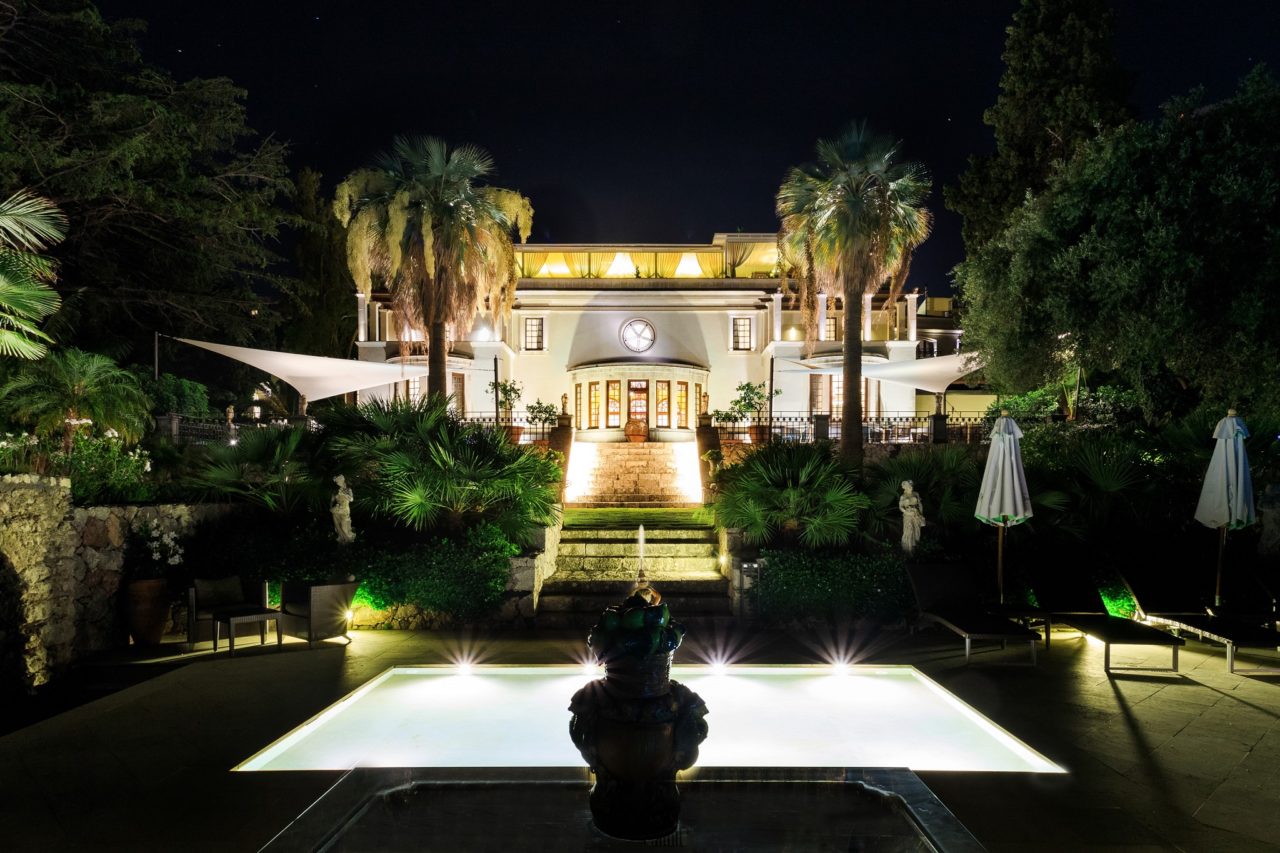
The Ashbee Hotel is a charming residence in an environment rich in history with a timeless garden of palm trees, lemons and grapefruits and a terrace with a fountain and pool that overlook to a breathtaking view. An ideal place for relaxing a few steps from the centre of Taormina. There is a unique and authentic place made of enchanting paths of light and spaces swathed in greenery. A place framed where time seems to have stopped. In front of a unique sea that only this part of Sicily can give.

The hallmarks of The Ashbee Hotel are constant attention of detail, a balanced combination of Anglo-Saxon and Mediterranean aesthetic tastes, a warm and friendly atmosphere where you can feel at home and hospitality tailored for each individual guest. There are 24 rooms and suites, each of them is a grand statement of colour and style, dressed with fine fabrics and antique furnishing in a contemporary concept. No two rooms or suite are alike, yet each of the 15 deluxe guest rooms and 9 luxury suites are richly decorated for a more intimate inward-looking mood.

Dining is an essential part of The Ashbee experience, inspired by mouthwatering seasonal products and local specialties. For foodies, the glamorous The Ashbee Hotel, with its acclaimed and one Michelin Star, St. George Restaurant by Heinz Beck (oh yes, the 3 Michelin star Chef of La Pergola in Rome), is a delightful gem where you can enjoy your lunch and dinner with the best food in town. The Ashbee Pool Bar, The Roof Terrace and The Lounge Terrace are great for breakfasts, aperitifs, after dinner and light lunch, all in the meantime you will enjoy a stunning sea view.
When to go
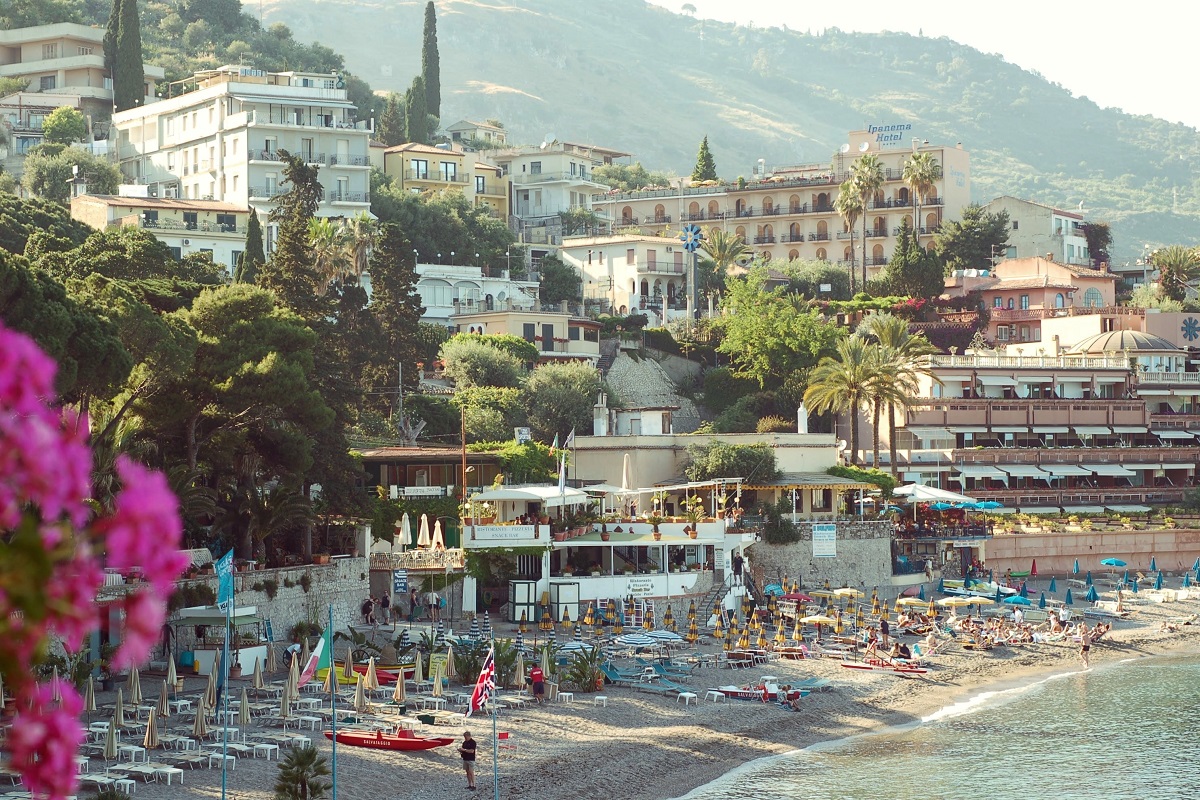
Summer is peak season with travelers packing into the town’s narrow winding pathways. The weather is also at its best, with hot, dry days and cool nights. But the best month is September, when the crowds have dissipated somewhat, the temperatures are still rather balmy, and the Ionian Sea remains warm enough for swimming.
Summer Festivals
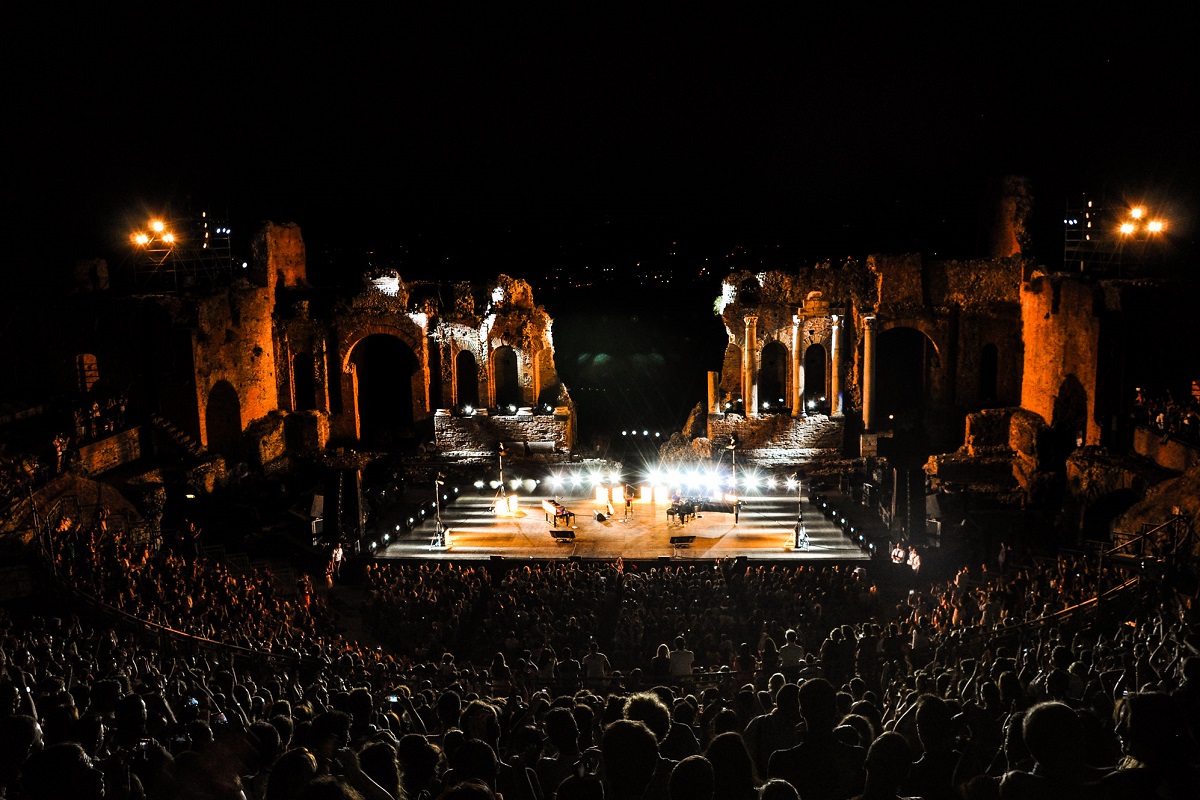
Taormina’s annual Summer Arts Festival incorporates music, dance and opera events from June through September in the town’s outdoor ancient Greek theater, with the moon overhead and seaside breezes, it’ll be hard to beat this performance setting.


